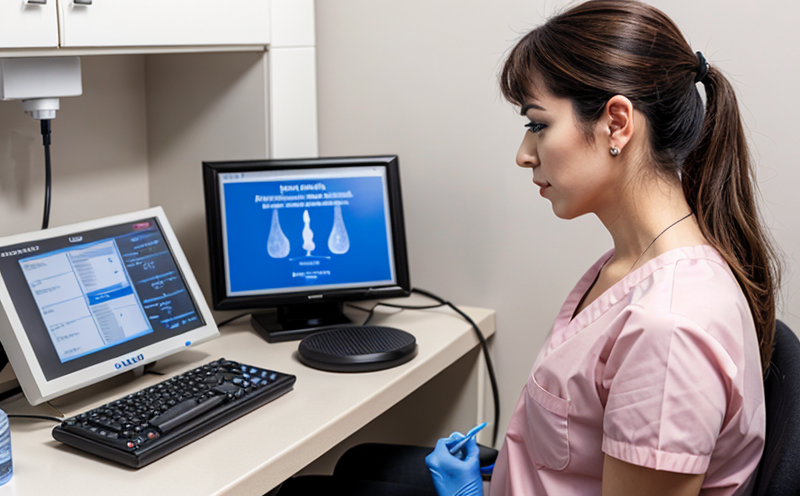Steroid Hormone Biomarker Testing in Environmental Monitoring
Steroid hormones are a crucial class of signaling molecules that regulate various biological processes within organisms. These hormones play vital roles in metabolism, growth, development, and reproduction. In the context of environmental monitoring, steroid hormone biomarkers have emerged as significant indicators for assessing contamination levels from sources such as wastewater discharges, agricultural runoff, and industrial effluents. This testing methodology is pivotal for ensuring compliance with stringent international standards and regulatory guidelines.
The primary aim of steroid hormone biomarker testing in environmental monitoring is to identify and quantify the presence of these hormones in water bodies, soil, and other ecological systems. The tests are conducted using advanced analytical techniques that ensure accuracy and precision, thereby providing reliable data for informed decision-making by regulatory authorities and stakeholders involved in environmental protection.
One of the key challenges in this field is the potential disruption to ecosystems due to endocrine-disrupting compounds (EDCs). These compounds can mimic or block natural steroid hormones, leading to adverse effects on wildlife health. By monitoring these biomarkers, scientists and policymakers gain insights into the extent of contamination and its impact on biodiversity.
The testing process involves several critical steps including sample collection, preservation, transport, and subsequent analysis. Samples are typically collected from various points along waterways or in areas where there is a known risk of contamination. Proper handling during transportation to the laboratory is essential to maintain the integrity of the samples. Once at the lab, they undergo rigorous preparation before being subjected to sophisticated analytical methods such as liquid chromatography-tandem mass spectrometry (LC-MS/MS).
The application of LC-MS/MS allows for highly sensitive detection and accurate quantification of even trace amounts of steroid hormones in complex matrices like water or soil. This technology enables researchers to pinpoint specific sources responsible for pollution, which is invaluable information for developing targeted remediation strategies.
Another important aspect of this testing process is the use of appropriate quality control measures throughout every stage from sampling through final reporting. Compliance with relevant international standards ensures credibility and reliability of results across different laboratories worldwide. For instance, ISO/IEC 17025 provides guidelines for competence in testing and calibration laboratories.
Understanding the environmental implications of steroid hormone biomarkers also extends beyond mere quantification; it includes evaluating the long-term effects on aquatic life forms exposed to these pollutants. This information helps establish safe limits for acceptable concentrations within designated bodies of water, guiding policies aimed at reducing overall EDC emissions into natural environments.
Applied Standards
| Standard Number | Description |
|---|---|
| ISO/IEC 17025:2017 | General requirements for the competence of testing and calibration laboratories. |
| ASTM E3486-19 | Standard guide for planning, designing, installing, validating, and operating environmental monitoring networks for detecting steroid hormones in aquatic systems. |
| EN 27007:2015 | Requirements for the competence of conformity assessment bodies providing services related to environmental protection. |
| IEC TR 63198-1:2014 | Guide on measurement uncertainty in analytical methods used for determining steroid hormones in water and wastewater. |
Why Choose This Test
Selecting steroid hormone biomarker testing as part of your environmental monitoring program offers numerous advantages. Firstly, it allows you to detect very low levels of contaminants that might otherwise go undetected by less sensitive methods. Secondly, the accuracy and precision provided by modern analytical techniques like LC-MS/MS make this approach particularly reliable for identifying specific sources contributing to pollution.
Moreover, compliance with international standards such as ISO/IEC 17025 guarantees consistency in methodology across various laboratories, ensuring that your results are comparable globally. This standardization is crucial not only within national boundaries but also internationally, fostering collaboration among researchers and policymakers worldwide.
A third advantage lies in the ability to track trends over time effectively. Regular monitoring using steroid hormone biomarker testing can help identify changes in pollution levels due to either natural factors or human activities. Such information is invaluable for understanding the effectiveness of implemented mitigation measures and making necessary adjustments accordingly.
Finally, choosing this type of testing supports broader efforts towards sustainability by providing actionable data that guides sustainable practices both locally and globally. By identifying problematic areas early on, you contribute positively to maintaining ecological balance while supporting regulatory compliance requirements.
Environmental and Sustainability Contributions
The importance of steroid hormone biomarker testing in environmental monitoring cannot be overstated when considering broader sustainability goals. It plays a critical role in protecting aquatic ecosystems from harmful impacts caused by steroid hormones discharged into water bodies through improper waste management practices.
Through regular monitoring, it becomes possible to assess the effectiveness of pollution control strategies and adjust them as needed based on real-time data rather than relying solely on historical records or predictions. This proactive approach ensures continuous improvement in environmental stewardship efforts.
In addition to immediate benefits for aquatic life forms, this testing contributes significantly to long-term sustainability objectives by promoting sustainable development practices throughout industries involved in water pollution generation. For instance, manufacturers responsible for producing items containing steroid hormones can implement cleaner production processes that minimize their emissions into the environment.
The information gleaned from such tests also supports educational initiatives aimed at raising awareness about proper waste disposal methods among consumers and communities. By understanding the consequences of improper practices, individuals become more conscientious participants in environmental conservation efforts.





